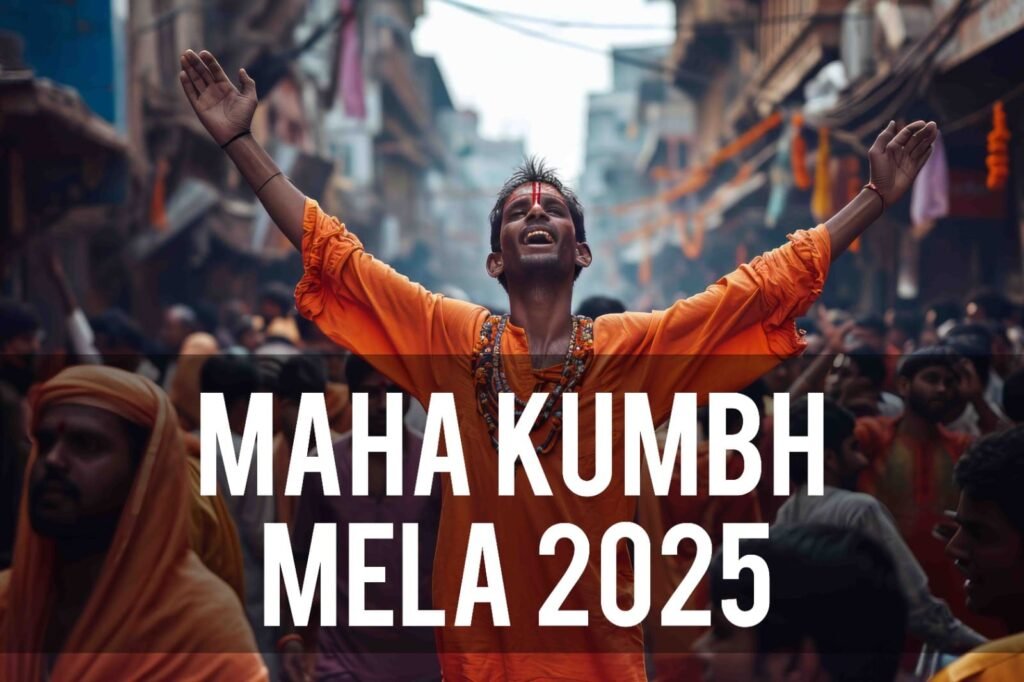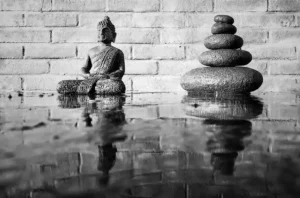Table of Contents
ToggleThe Maha Kumbh Mela is a spiritual event that held on every 12 years, attracting many of devotees and travelers around the world. In 2025, the sacred city of Prayagraj will coordinate this extraordinary festival. It is rewarded at the confluence of three rivers the Ganga, Yamuna, and the mythical Saraswathi making it one of the most spiritually significant gatherings in Hinduism.
This celebration not only stated as a religious event, it is a vibrant cultural aspect where ancient traditions come alive in their rituals. Pilgrims believe that taking a bath in the holy waters during the Kumbh Mela that cleanses the soul and brings you a spiritual liberation. Also, the rituals and prayers, the event showcases India’s rich heritage through music, art, and a sense of collective devotion that unites people from diverse backgrounds.
The Sacred Bath at Maha Kumbh Mela
In the Triveni Sangam, the place where Ganga, Yamuna, and the mythical Saraswati combined, that turns to be the core of the Maha Kumbh Mela where a sacred bath is happened. This process of devotion is practiced to purify the soul, cleanse sins, and lead to spiritual enlightenment. Among the many holy bath, the Shahi Snans hold the valuable significance, converging millions of pilgrims on key dates.
Makar Sankranti (January 14) states the initial event of an auspicious stream as the sun transitions into Capricorn. Devotees join at the Sangam for the first Shahi Snan, representing renewal and enlightenment.
Mauni Amavasya (February 20), preferred as the most sacred day of the Mela, that largest congregation is visualised. Pilgrims follows silence and take the holy bath, rewarding spiritual growth and inner peace.
Basant Panchami (February 23), a day for celebrating knowledge and wisdom, is another core event of participation where devotees console themselves in the waters to honor the divine.
The sight of millions stepping into the confluence, chanting prayers, and seeking blessings, transforms the Sangam into a living testament of faith. Each dip reflects a timeless tradition that unites devotees in their quest for salvation and the divine.
The Holy Bath
At Maha Kumbh Mela taking a bath from Triveni Sangam the beautiful combination spot of river Ganga, Yamuna and mystical Saraswati rivers is tend to be the most valued events in ceremony. More of devotees dip themselves in the holy waters, trusting it cleanses sins and purifies the soul. In the guidance of ancient scriptures, this ongoing ritual signs, spiritual renewal and the path to salvation. The collective faith and devotion create an atmosphere of divine energy, as pilgrims chant prayers and seek blessings. This refers to be most devoted moment in the entire event.
Aghori Sadhus
Let’s dive into the life of Aghori’s, a striking presence at the Mela. They always draw awe and curiosity among us. Pleasing to Lord Shiva they are known for their unconventional practices, they meditate in cremation grounds, smear their bodies with ash from funeral pyres, and reject societal norms. Their looks and rituals symbolize their quest to conquer fear, transcend attachments, and embrace the impermanence of life. Aghori’s teach profound lessons about detachment from material existence, reminding seekers of life’s deeper spiritual purpose.
Poojas and Rituals
The Maha Kumbh Mela is intervined with elaborate poojas and rituals led by learned priests. The air reflects with the Vedic chants, while devotees offer flowers, incense, and prayers. Diya’s drafts the riverbanks, and the floating lamps over the waters create an unstoppable spectacle, compiling all in one valued devotion.
The History of Kumbh Mela
Mythological Origins
The origins of Kumbh Mela rewind to the forcing and interesting tale of Samudra Manthan, or the churning of the ocean. In this capilarising event, the devas (gods) and asuras (demons) joined themselves to churn the ocean to obtain Amrit, the nectar of immortality. Once the Amrit arrived, a battle began over its having. To protect the nectar, the divine carrier Garuda grabbed it away, and during his flight to destination, four drops of Amrit fell to Earth. These drops then evolved the locations of Prayagraj, Haridwar, Ujjain, and Nashik, turning them as sacred sites for Kumbh Mela.
The mythological Relevance of these sites is stated, as it is believed that having a holy bath during the Kumbh Mela at these destinations cleanses the soul, remove sins, and brings closer to salvation. The tale of Samudra Manthan energises the eternal struggle between good and evil, with the nectar follows as divine wisdom and immortality.
How It Began
The tradition of Kumbh Mela is believed to have started thousands of years ago, with its roots in ancient Vedic practices and spiritual gatherings. Over centuries, these gatherings evolved into the grand spectacle we know today, celebrated every 12 years at the designated sacred sites. Historical texts, such as the Puranas, explains how sages and seekers gather the whole for spiritual concepts and rituals at these locations, converting them into places of devotion and learning.
The Kumbh Mela has setup its position into the world’s largest spiritual gathering, unveiling the attention of millions from all over the globe. The appeal over Kumbh Mela lies in its strength to bring people together, transcending boundaries of age, class, and nationality, as they partake in a shared journey of faith and spirituality.
Also read: Maha Kumbha Mela Wishes, Quotes 2025
Key Events at Maha Kumbh Mela
Central to the Mela are spiritual discourses by saints and gurus, where ancient practices are shared to inspire devotees on their spiritual travel. These combining’s are complemented by slaying with bhajans and kirtans, devotional songs that reflects with divine energy, creating an aura of collective reverence.
Traditional performances, including classical dances and folk music, add a cultural dimension to the Mela. These events celebrate India’s rich heritage, showcasing its diversity and artistic expression. Pilgrims also visualises grand aarti ceremonies, where saints offer prayers with flames and chants, illuminating the riverbanks with spiritual enlighten.
The Kumbh Mela is a religious event and also a reflection of faith, tradition, and culture. It collectively blends devotion with vibrant festivities, offering something for every Helder. The involvement in participating in rituals, hearing to enlightening discourses, or admiring at the artistic performances, the Mela provides a collective experience, sourcing people from variant backgrounds in a journey of spiritual awakening and cultural applause.
Cultural and Spiritual Significance
The Maha Kumbh Mela, is the largest religious gatherings in the world, holds the various cultural and spiritual significance in India. It is celebrated on every 12 years that attracts the devotees from various places of India. Completely fosters the tradition, it holds profound spiritual practices, communal harmony, and a vibrant display of cultural heritage.
The event revolves around the belief in the purification of the soul through a holy dip in sacred rivers like the Ganga, Yamuna, and the mystical Saraswati. This act is thought to cleanse sins and lead to liberation (moksha). The mela is also an opportunity for spiritual seekers to interact with Aghori sadhus and saints who gather from remote hermitages. Culturally, Maha Kumbh Mela applies as a platform to present India’s diversity, with art, music, and dance contributing to the festive spirit.
Also Read: Maha Shivratri Wishes in English 2025
Conclusion
The Maha Kumbh Mela is an act of devotion and dedication- it is a valued journey of faith that unites and merges a million across all over the globe. This grand celebration not only embodies devotion, but also culture, and spirituality, transforming and transmitting the sacred grounds into a vibrant path of human connection and divine pursuit. As pilgrims or saints gather to cleanse their souls, seek blessings to eternal world, and embrace the teachings of spiritual leaders unconditionally, they contribute to the preservation of timeless traditions. Maha Kubhamela lifetime event to be experienced on this entire life.
For more such captivating stories, delve into the Hidden mantra of exploring history, culture, and spirituality through our blogs. Discover how these timeless narratives connect us to our roots while guiding us in the present. Content related to Indian Culture and heritage is present in Hidden mantra blog. Follow us for more related blogs like Yoga, Buddhism, Theyyam etc. Namaste!
Read more : Bhagavad Gita Quotes








